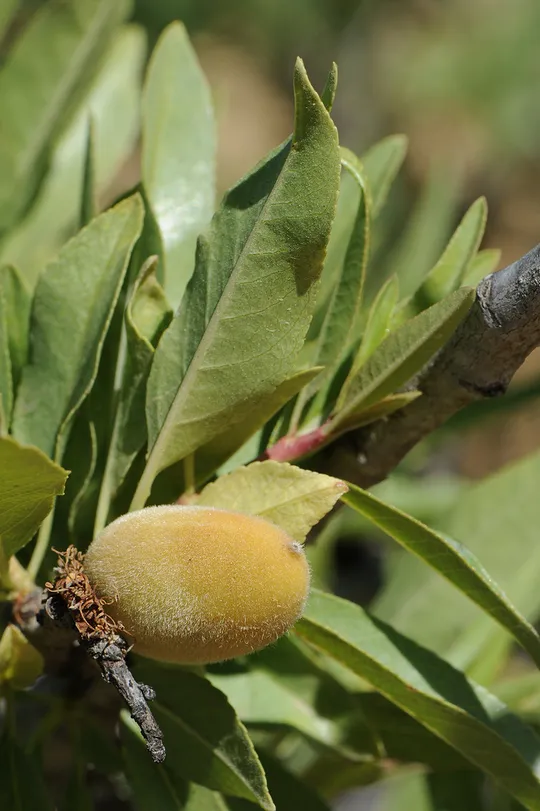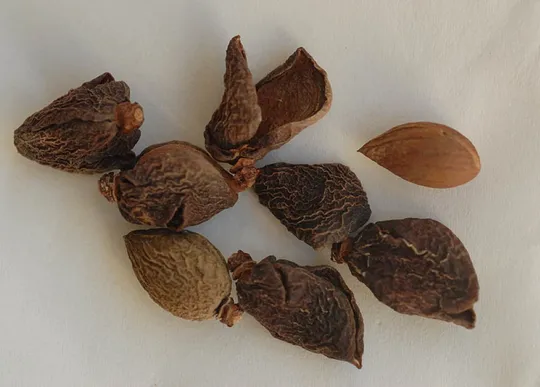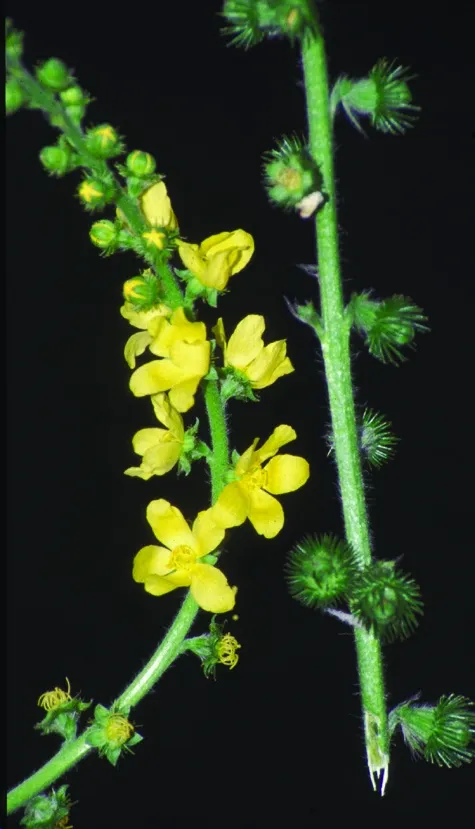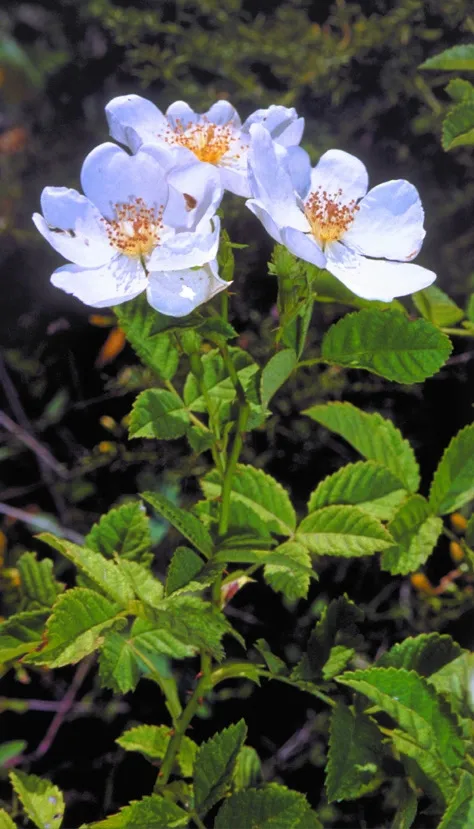Lebanese Wild Apple, Erect Crab Apple
Eriolobus trilobatus
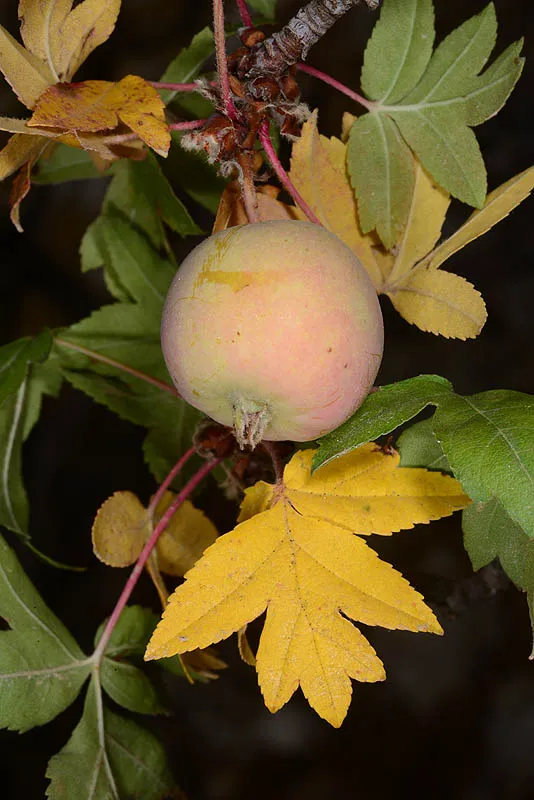
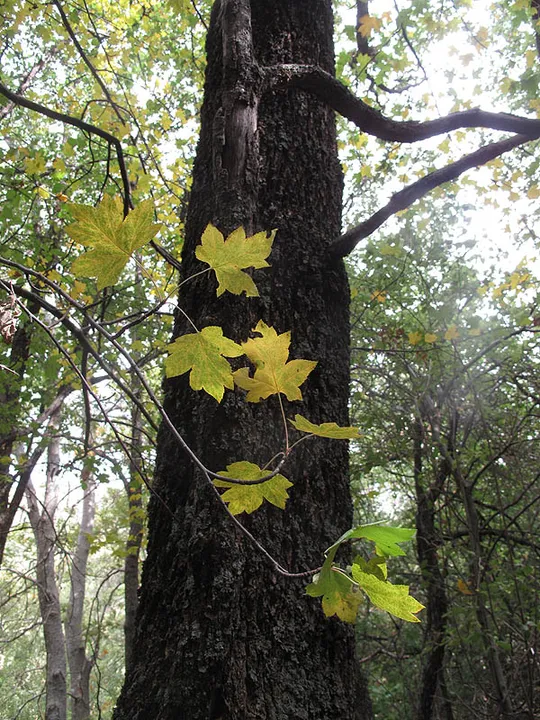
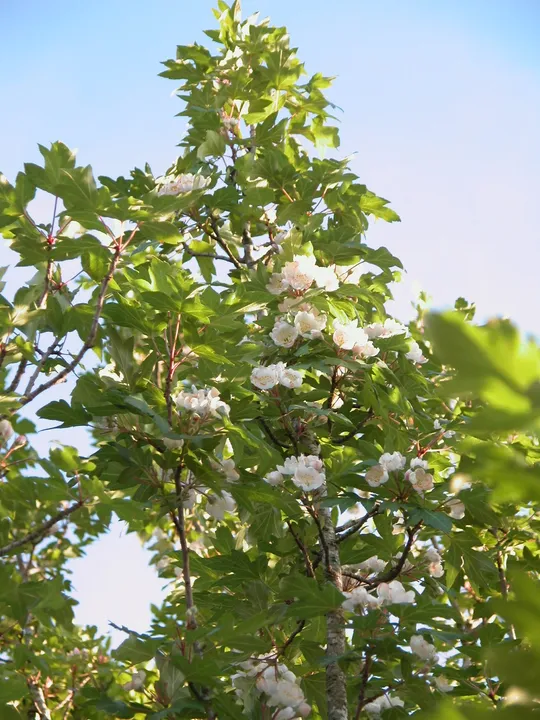
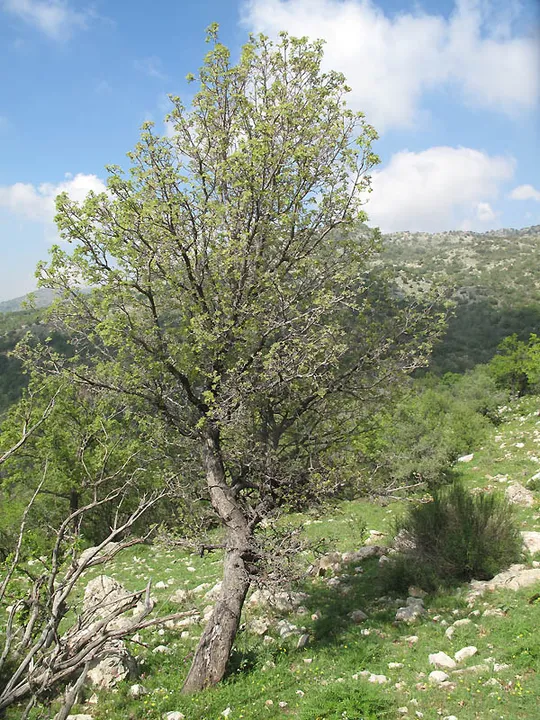
Eriolobus trilobatus grows at a few sites on the Upper Galilee peaks, in
the upper tributaries of the Kziv Stream and in the Mount
Adir area. The largest group of trees grows in the upper Kziv Stream, north
of Mount Hillel, on densely wooded northern slopess. The species is not
found in the Golan Heights. It was believed to grow on Mt. Hermon, however this
was a case of mistaken identification of a different genus, Sorbus
torminalis.
Dense and shady woodlands
on hills above 800 meters altitude with rainfall of
800 mm and more, together
with Quercus calliprinos and Q. boissieri (infectoria).
Eriolobus is
a monotypic genus in the Rosaceae family. The genus is characterized by its emarginate leaves and particularly by
the presence of five stigmas in the flower and five locules in the ovary and in the fruit. This feature differentiates the genus from the closely related genus Sorbus. The genus Eriolobus was previously associated
with the genus Sorbus
and other close genera: Malus, Crataegus – an indication of their
closeness.
·
Eriolobus trilobatus is found at only six sites in Israel. All of them are located in the Mount Meron area and nearby Wadi Godrim. The longest distance between two sites is about 10 km. The trees grow individually and do not form dense
populations.
· In 1991,
only 150 trees
were counted at the eight sites.
· E. trilobatus is protected by law. All the sites from which
the species is known are located within nature reserves.
·
The species is recorded as “very rare” throughout
most of its global range, particularly in Lebanon, from where the tree was first
described.
· E. trilobatus is an upright tree extremely
threatened by felling (for use as beams and for heating).
·
The trees are relatively distant from settlements and highways,
and are not very easily reached. Most trees grow in woodland and their habitat is not threatened, although they may be at risk at
the edge of cultivated plots. Despite their location in reserves, illegal felling still occurs.
The law prohibiting damage
to trees should be strictly enforced, and the sites where Eriolobus
trilobatus grows should be clearly and visibly
signposted. The trees should be monitored and their demographic and
phenological indices should be recorded. E.
trilobatus seeds are easy to germinate and they should
be grown in refuge plots for reintroduction to nature, in order to reinforce small populations.
Eriolobus trilobatus grows in the eastern Mediterranean
Basin: in northeastern
Greece (altitudes above 50 meters), in southern Bulgaria
(on a single site), and in Turkey (west and south, including the Auxinian Triangle and the Gulf of Alexandretta, at altitudes above 800 m). In Lebanon, E. trilobatus is quite common (at
altitudes of 800-1800 m) and in northern Israel it reaches the southernmost limit of its global distribution.
Eriolobus trilobatus is winter-deciduous tree from the Rosaceae family, whose southernmost limit is the Upper Galilee. It is very rare throughout its range, and it is
found in Israel at only eight sites, which include 150 trees, all
of them in a single section.
The proximity of the sites, their small number and the peripherality of the
species are the characters that determine its status as a red species.
פולק ג. ושמידע א. 1982. פסגות הגליל העליון – בעקבות השתלמות רת"ם. רתם 4: 48-53
שמידע, א. ודנין, א. 1983. "צמחי החודש". טבע וארץ, כה:2.
Browicz, K. 1982. Chorology of trees and shrubs in South-West Asia and adjacent regions Vol.1:48 (map 76). Polish Academy of Sciences. Warszawa-Poznan.
Current Occupancy Map
| 1000 squre meter pixel | 5000 squre meter pixel | 10000 squre meter pixel | |
|---|---|---|---|
| number of observations | 0 | 0 | 0 |
| in total pixels | 0 | 0 | 0 |
| Family | Rosaceae |
| Classification | On the endangered species list |
| Ecosystem | Mediterranean |
| Chorotype | Eastern Mediterranean |
| Conservation Site | Halat el-Qabarish near Mount Hillel |
| Rarity |
1
3
6
|
|---|---|
| Vulnerability |
0
1
4
|
| Attractiveness |
0
1
4
|
| Endemism |
0
0
4
|
| Red number |
1
3.2
10
|
| Peripherality | N |
| IUCN category | DD EW EX LC CR EN VU NT |
| Threat Definition according to the red book | Vulnerable |
 Based on:
Based on:
